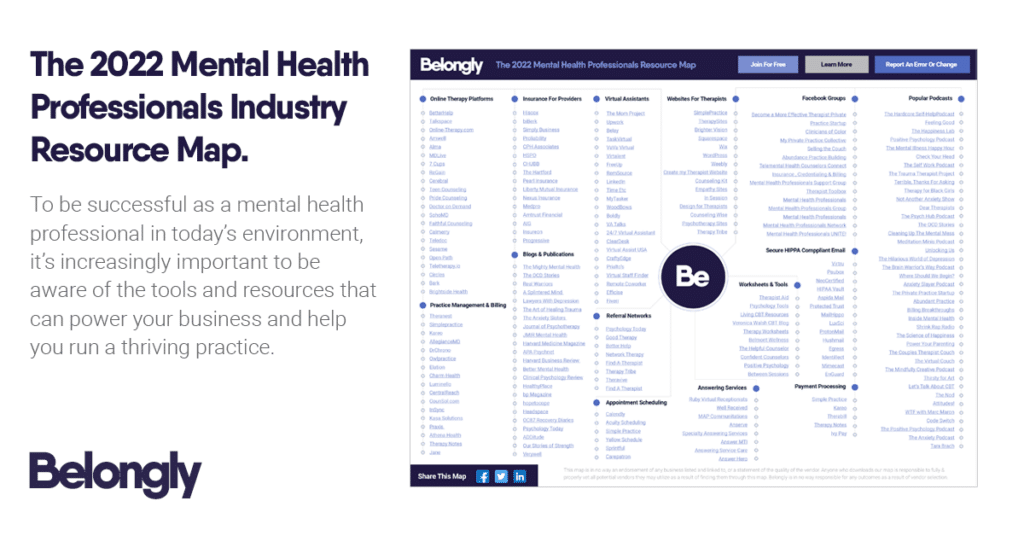When people think about therapy and owning a practice, marketing usually isn’t at the top of their to-do lists. But, remember just how intimate a therapist-patient relationship is.
People aren’t looking to buy therapy – they’re looking for the most reliable solution out there. Part of successful marketing for therapists is to build that instant connection and resonance with the individual.
Being a therapist is all about helping people; But, you know better than anyone that it’s also a business.
This is simplified marketing for therapists. Below are 4 actionable and practical strategies to grow your practice, that you can start implementing today.
1. Find or Reassess Your Niche
It’s essential to nail your niche because it’s really the backbone of your practice’s marketing strategy. Once you know the niche you’re working with, you’ll be able to create content that resonates with your audience and serve clients you love to work with.
If you have yet to define your niche, the questions below will get you started. If you’ve operated a private practice for a while now, you may already have a niche. Take time to re-answer these questions, as a practice’s niche can change with time.
These are questions pulled and modified from Seth Godin’s This Is Marketing: You Can’t Be Seen Until You Learn to See (2019):
- Who is your practice for?
- What is your practice for?
- What is the cultural and societal background of your clients?
- What problems do your clients face?
- What changes are you trying to make?
- What assets are you building (e.g. training, self-help tools, guidance, etc.)?
- What will your clients tell their friends?
- Why will your clients tell their friends?
2. Add These Elements to Your Website
Chances are, you already have a website with important pages like the About Me and Service page, But, have you considered adding a resources page and a video introduction? Again, these elements establish a level of trust beyond what you already have on your website. Let’s dive into each:
Resource page
A resources page is a place on your website where you can share different kinds of psychoeducation resources. For instance, you could share your favorite mental health podcast or a Youtube video explaining what therapy is on this page. The most important thing is to find resources that are free, and accessible to all.
Show up for potential clients, and be seen as a practice that wants to help beyond the money. Just because your client isn’t ready for therapeutic intervention now, it doesn’t mean that they won’t be ready in the future.
Video introduction
There’s only so much that text can convey. Your voice, tone, facial expressions, mannerisms, etc. – these are important factors when it comes to building therapist-patient relationships.
Chances are, you have people that you hold near and dear. Your potential clients do too. If your video introduction reminds a potential client of a precious someone – they are that much more inclined to work with you.
3. Create Freebies to Establish Trust
What we mean by this is to offer your audience free value, so that they are more inclined to trust and work with you. With a therapy practice, knowledge is your freebie of choice. Don’t tell but show your audience that you have the expertise to skillfully and realistically help them with their problems.
Some therapy practice freebies include:
- Blog posts
- Newsletters
- Self-help worksheets
- Virtual or in-person workshops
- Video guides (e.g. meditation, anxiety relief, etc.)
- Podcasts
One powerful thing about these freebies is that, once created, they will passively generate new clients. Creating and disbursing freebies falls under content marketing, which produces 54% more leads than traditional methods of marketing. As long as freebies stay available, your practice will continue to receive traction from the value you’re putting out.
4. Network With Other Therapists
Don’t view other therapists as your competition — when they could be your friends. Think of it this way: one therapist can’t help everyone.
If you’ve been operating a private practice, you’ve probably had to turn people away. It could’ve been because they didn’t have the right insurance, or you just didn’t feel confident to take them on.
What if there was a trusted therapist that you could refer them to? A therapist that would refer compatible patients back to you?
Use the previous strategies to build trust so that other therapists are confident enough to refer you to their patients. Reach out to other therapists, and immerse yourself in a professional network. Relying on this community can be beneficial for you and the people you help every day.
Keep Reading
Want more? Here are some other blog posts you might be interested in.










